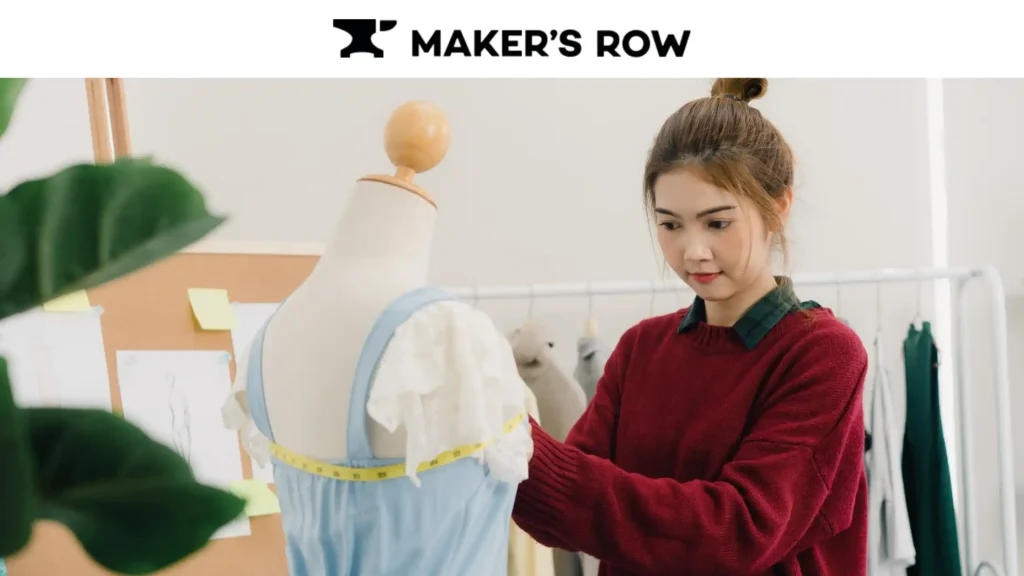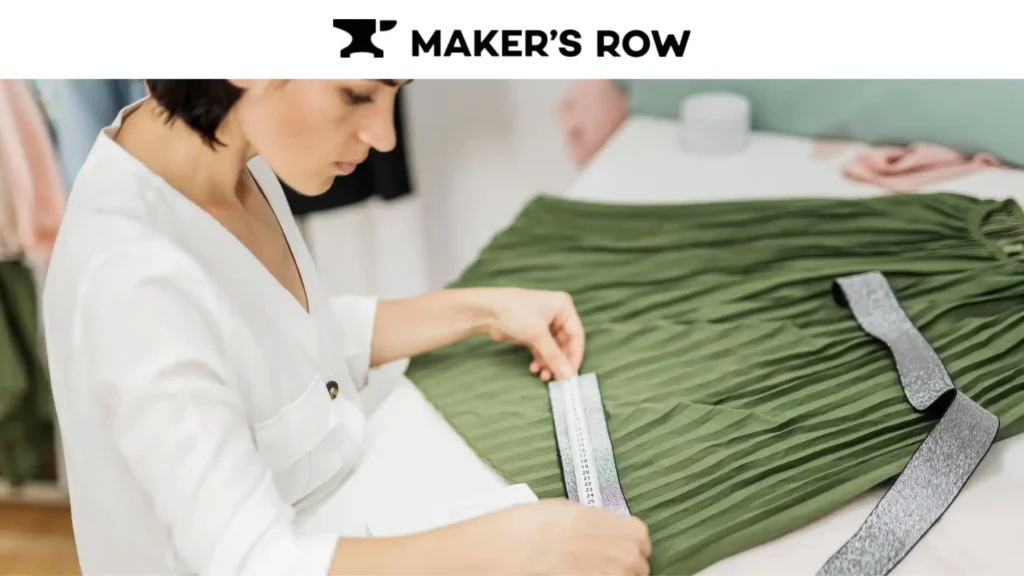In recent years, there has been an increase in the demand for sustainable clothing production, aiming at reducing the negative impact it has on the world’s environment. Consumers are now more aware, thus forcing designers as well as manufacturers to reconsider the manufacturing of garments. One of the most important parameters of sustainable fashion is the choice of the fabrics used. Using environmentally friendly products as raw materials has the benefit of lowering manufacturers’ impact on the earth as they develop more efficient products.
In this blog, we will go into depth on how to select clothing fabrics for manufacturing. Particularly, aspects of sustainability and the most crucial errors to avoid when selecting fabric.
What’s the Need for Sustainable Clothing Production?
Eco-friendly fashion is needed because it tries to reduce the harm done to the environment. This style incorporates the use of materials and processes that aim to limit waste, energy, and water consumption and even provide decent working conditions. The fashion industry, for instance, is one of the largest polluting industries, especially when it comes to the use of artificial fibers such as polyester and nylon. These fabrics are made out of virgin resources and could cause adverse effects such as microplastic pollution.
Because of this challenge, several clothing manufacturers have started switching their clothing production towards sustainable clothing. There are several factors driving this change, but perhaps the most important is the question of the raw material, as it impacts every garment’s effect on nature.

1. Popular Fabrics Used in Clothing Manufacturing
Some fabrics are able to fulfill the principles of sustainable garment manufacture better than others because they are environmental and biodegradable. Below are some of the best fabrics for sustainable clothing production:
- Organic Cotton
Organic cotton is among the most sought-after materials in today’s eco-conscious world. Before, the term ‘organic cotton’ was never associated with the growing of cotton and certainly not with the growing of farm cotton with no chemical fertilizers and GMOs. This helps in curbing soil erosion and pollution of water resources, making it more environmentally friendly. Organic cotton, to some extent, is grown using less water as compared to the growing of conventional cotton, thus making its growing even more environmentally friendly.
- Hemp
Hemp represents a multifaceted and highly viable sustainable fabric option. It is a fast-growing plant with low moisture needs and grows without the use of pesticides or herbicides. Hemp fibers are equally tough, which means the items made from them do not wear out quickly. Most importantly, it is biodegradable, which means that at the end of its lifecycle, it will decompose naturally without any adverse effects on the environment. Hemp is also used in many textile pieces of clothing, such as shirts, pants, and coats, among others.
- Tencel (Lyocell)
Tencel is the fabric trademark for Lyocell. Lyocell is made out of processed wood pulp, usually derived from eucalyptus, beech, and spruce trees. The process used to make Tencel is rated as a closed-loop system since almost all of the chemicals and water consumed in the process is reused, rendering it an environmentally friendly fabric. In addition to that, Tencel is also environmentally friendly in that it is soft, lightweight, breathable, and biocompatible, thus suitable both for eco-friendly garment manufacturing factories and for consumers.
- Linen
Linen is produced out of the flax fiber, which has been incorporated in textiles for quite some time. This is because it is one of the most eco-friendly materials; the cultivation of flax does not require a lot of water and pesticides to thrive. Linen is also environmentally friendly in that it decomposes, it has a long life, and it allows free circulation of air; hence the use of fabrics made from linen in warm climates. Linen fabrics are environmentally friendly in that, even though they are prone to creases, most eco-friendly designers tend to use them.
- Recycled Polyester
Recycled polyester is the “good” version of polyester, which is known for its adverse sustainability impacts. This type of fabric is typically made from used plastic bottles. Essentially, recycled polyester helps in cutting down on waste and reduces the strain on the production of evermore virgin materials. This fabric is stretching the life cycle of plastic waste, which is however not a natural material as there are no bacteria that would break it down in soil, oceans, or anywhere else for that matter. Because of its strength and moisture-wicking properties, recycled polyester is also known to be used in activewear and in making outer layers of clothing.
2. Common Fabric Selection Mistakes
In a world where apparel production should be sustainable, the use of appropriate fabric comes first. However, there are some usual fabric selection mistakes committed by even famous designers, which reduces their sustainable clothing production effort. Below are the major flaws that should be looked out for.
- Disregarding the Source of the Fiber
The origin of the fiber should be considered and respected. It is even terrible when natural fibers like cotton or wool are used that have not been sustainably sourced. Conventional cotton farming, for instance, requires a lot of water and the application of harmful pesticides. Use fiber that is either organic or from crops grown under environmentally friendly practices.
- Failing to Consider the Manufacturing Process
It is wrong to consider a fabric in detail while ignoring the processes used to manufacture it. Certain fabrics, for instance, undergo processes such as dyeing that are harmful to the environment. Choose fabrics that are manufactured in green garment factories employing waterless processes and non-chemical-based dyes.
- Putting Style Preferences Before Practicality
There can be consequences for choosing to work with fabrics if only the fashion aspect is taken into account. It is obvious that using such fabrics, which are visually appealing but lack toughness, will result in a short lifespan of the products and increased improper disposal of waste. When selecting fabrics for making clothes, the factors of practicality and durability should come first to ensure that the produced clothes are long-lasting, thus minimizing re-occurrent wardrobe overhauls.
- Overlooking Post Use Consequences
A big miscalculation is failing to take into account the afterlife of the clothing. Some fabrics, such as polyester, take centuries to decompose, consequently causing pollution for years to come. Instead, when possible, use disposable options like organic hemp, organic cotton, or tencel, which will be friendly to Mother Nature upon disposing of the product.

3. Importance of Eco-friendly Production
In recent years, the importance of eco-friendly apparel factories has increased because such factories avoid the exploitation of manpower and use lean manufacturing concepts and energy-efficient machinery to cut down on the amount of waste generated and the energy consumed. Most of the damage caused to the environment by these apparel factories is also minimized by the manufacturers’ use of sustainable materials in addition to the materials used for the sustainable fabrics.
To cut down their carbon emissions, some factories are now employing renewable energy sources such as solar and wind energy. Water-saving measures such as closed-looping coloration systems and harvesting of rain also help in improving conservation of water. This is because working with green apparel manufacturing factories ensures that all the processes involved in production are in line with the sustainable objectives.
4. Creativity with Eco-friendly Resources
There is always room for improvement in the innovation of sustainable materials, given that new options are always being introduced. From algae-based biofabrics to food waste-derived textiles, the dawn of sustainable clothing production is indeed colorful. Such innovations enable manufacturers to make eye-catching, stylish, and sustainable garments, which gives them a competitive edge in the market.
Additionally, fabric technology advancement keeps designers and even manufacturers abreast and enables incorporation of new materials into their collections. This does not only help in drawing the attention of the green consumers but in positioning the brand as an innovative, sustainable one.
Maker’s Row Can Assist You in Your Sustainable Clothing Production Efforts
If you are looking to start a clothing business and want to connect to the best manufacturers out there, Maker’s Row is the best place to be. We will help you find manufacturers who are as environmentally conscious as you are and want the fashion industry to change by helping your sustainable clothing production efforts.
Come book a demo with us to see the magic!
Conclusion
The selection and use of sustainable materials in apparel factories is paramount in the quest for eco-friendly garment production. The use of organic cotton fabrics and hemp or tencel plus recycled polyester can help in reducing the environmental burden by any manufacturers. However, for any garment to be called sustainable, it must be designed with care for quality and longevity.
Moreover, eco-friendly apparel factories are committed to the cause of sustainability, which means that all the processes involved in the manufacture of the garments are clean and responsible. Given the increasing demand for sustainable clothing and the realization of apparel utilizing modern sustainable materials, the fashion industry will no longer be dominated by unsustainable practices.
Read More…